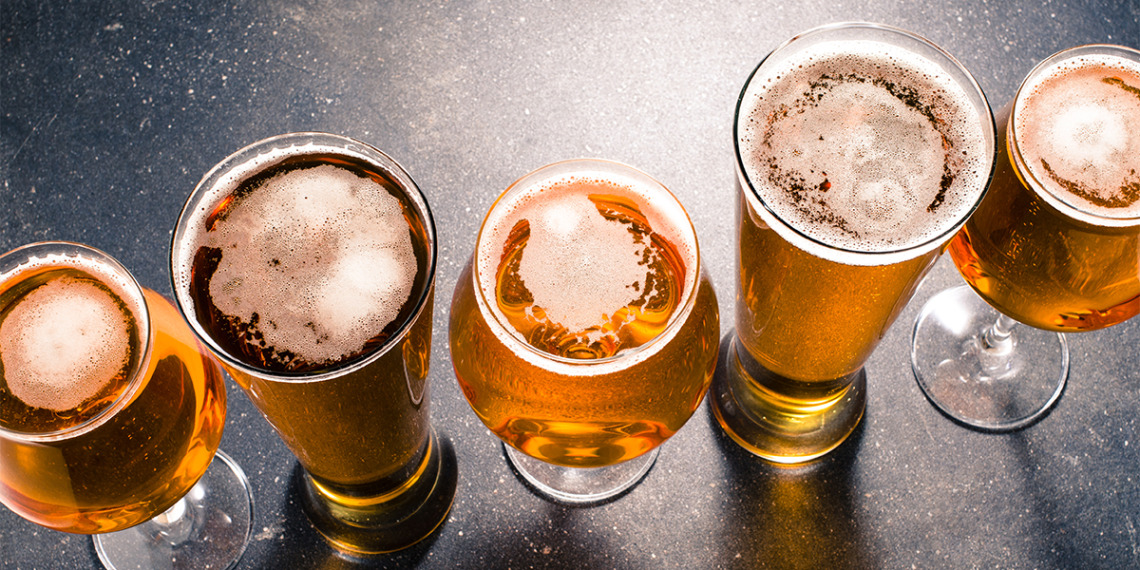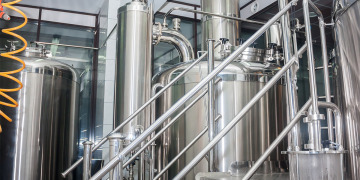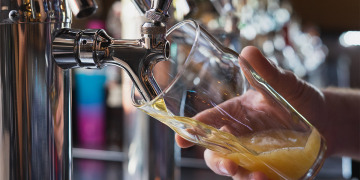From Wastewater to Craft Beer
In an effort to find sustainable solutions for Arizona’s water supply, engineers are bringing environmentally friendly practices to the state’s burgeoning beer industry.

In the desert, water is life. But the groundwater and surface water that desert dwellers rely upon are dwindling and scientists are scrambling to find alternative sources.
Every day, tens of millions of gallons of reclaimed wastewater, or effluent, pours out of our wastewater treatment plants. Some is sent to irrigate parks, golf courses and schools, and some is sent down the Santa Cruz River to recharge the aquifer.
With the technology available to turn effluent into clean drinking water, a consortium of scientists and engineers was tasked with what may be a bigger challenge: changing people’s attitudes toward consuming treated wastewater.
Their solution? Beer.
In November 2016, the Arizona Community Foundation held the New Arizona Prize: Water Innovation Challenge to find sustainable solutions for the state’s water supply.
Pima County’s Southwest Water Campus team presented a five-step water purification process that became the first step in a craft beer competition. Among nearly two dozen entries, the Southwest Water Campus team won the grand prize and more than $300,000 to bring their pitch to life.
“The results of this project will help Arizona Department of Environmental Quality develop a pathway for potable reuse for cities in need across Arizona,” Channah Rock, Southwest Water Campus team member and microbiology professor for the University of Arizona, told the Pima County Communications Office.

The AZ Pure Water Brew Challenge aimed to help educate and change public opinion of purified recycled water.
Step 1: Wastewater to Pure Water
Turning recycled community wastewater (reclaimed from Pima County’s Agua Nueva Water Reclamation Facility) into pure water starts with ultrafiltration, which removes suspended solids, bacteria, protozoa, cryptosporidium and giardia. Next, reverse osmosis removes salts and minerals, pharmaceuticals, personal care products, inorganics, heavy metals and viruses. Then, UV/advanced oxidation destroys pathogens and trace organics, and granular activated carbon (comparable to the charcoal filter in Brita filters) removes additional trace organics, disinfection byproducts and remaining hydrogen peroxide. Finally, chlorine disinfection destroys pathogens and viruses.
To prepare for this competition, the Southwest Water Campus team treated more than 80,000 gallons of recycled community wastewater and traveled more than 2,800 miles educating thousands of Arizonans on the technology used to create recycled water.
Step 2: Pure Water to Pale Ales
The Southwest Water Campus team partnered with more than two dozen Arizona brewers for the first AZ Pure Water Brew Challenge. In order to participate, brewers needed to be members of the Arizona Brewers Guild; they had to use the pure water provided to make the beer; and they had to pre-select one beer group and one beer style.
The partnership between reclaimed wastewater organizations and breweries turned out to be an ideal one — the brewing process uses a lot of water, and in an industry where the local community is so entwined with a brewery’s success, conservation in drought-prone Arizona is simply good business.
The Southwest Water Campus team used the prize money from the New Arizona Prize: Water Innovation Challenge to build the AZ Pure Water Challenge Truck, a mobile potable reuse treatment facility, which transported reclaimed wastewater from Flagstaff to Yuma and dozens of cities in between.
The AZ Pure Water Challenge Truck showcases how pure water is created. High-tech instruments and machines fill the trailer from tip to tail, with just enough of an aisle to watch recycled water go from dirty to disinfected.

The AZ Pure Water Challenge not only helped to sway public opinions of reclaimed wastewater, but the competition also provided important data for the Arizona Department of Environmental Quality.
Step 3: From the Tap to On Tap
In early September 2017, brewers from the Arizona communities of Tucson, Yuma, Prescott, Flagstaff, Sedona and Phoenix gathered in Tucson to have their beer entries judged anonymously at the AZ Pure Water Brew Challenge.
Dragoon Brewing Company, a Tucson-based brewery, won with its Clear Water Pilsner, a Bohemian-style pilsner. Arizona Wilderness Brewing Company, from Phoenix, took runner-up with their Pure Water Double IPA, and Crooked Tooth Brewing Company, also out of Tucson, won the People’s Choice selection with their Tamarind Sour Brown.
The Clear Water Pilsner’s success has been attributed to its quality ingredients, including high-quality water. The beer itself is simple and clean, with a refreshing taste that doesn’t rely on complex hops for flavor. Each component of the brew needs to make an impact, and pure water is its most important.
The Future of Water in Arizona
While the goal for this campaign was to change the public’s perception on potable reuse, the end purpose was to provide the Arizona Department of Environmental Quality with the data necessary to implement potable reuse in Arizona.
“The goal of the AZ Pure Water Brew Challenge was to help people understand and trust the technology used to create purified recycled water as a possible renewable source for future drinking water,” Jeff Prevatt, research and innovation leader for the Pima County Regional Wastewater Reclamation Department, told the Pima County Communications Office. “Our goal was to demonstrate that purified water is clean and safe. Looking back at the past year, I think we’ve done that.”
With help from the Southwest Water Campus team, ADEQ submitted a guidance document to the legislature in an effort to lift the prohibition on potable reuse. In 2018 the ban was lifted, paving the way for future effluent-to-potable reuse projects and providing possible solutions for Arizona’s water supply issue.
